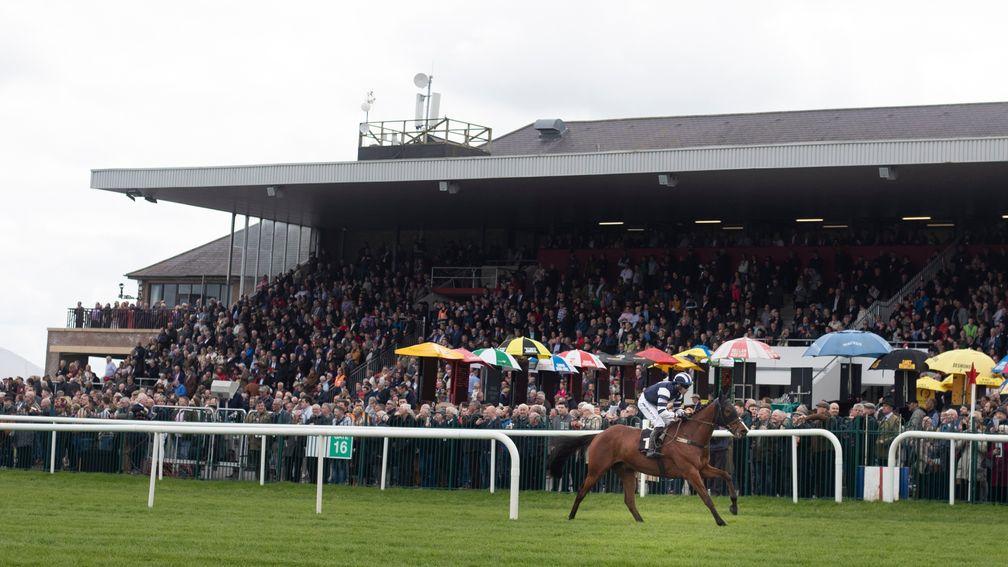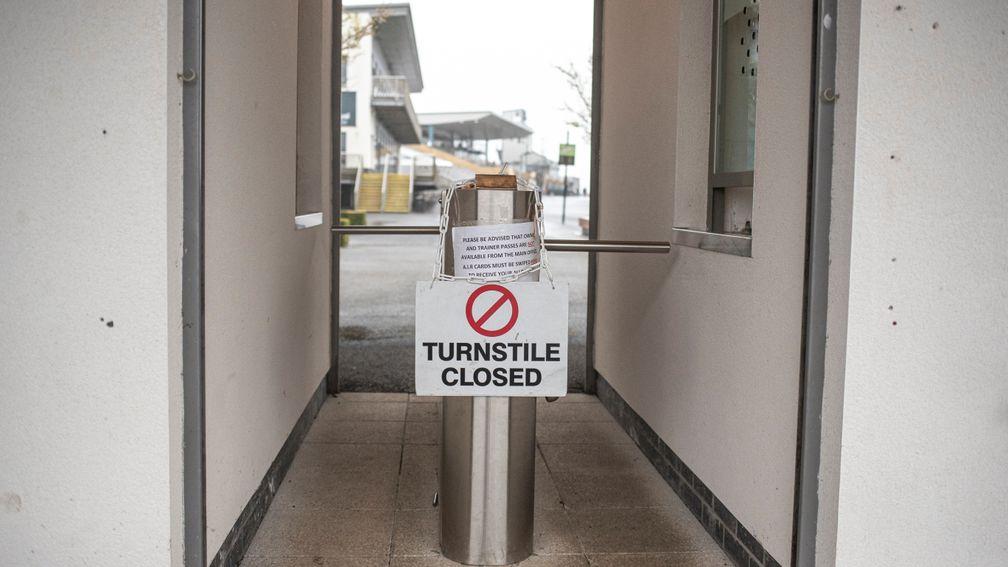Less is more: the evidence to support a bloated fixture list is non-existent

Professional punter Patrick Veitch kicks off two days of views about an always contentious subject: the racing calendar
As a regular follower of racing, have you long had a sense of unease about the fixture list? Do you feel that you are bombarded with so much racing, much of it highly monotonous in nature? Is keeping abreast of each day’s racing a Herculean task, with the inevitable consequence that you don’t even try most of the time?
This viewpoint is so widely held by both racing professionals and fans it is often hard to find anyone who disagrees. Yet, due to the relentless mantra from bookmakers, the BHA and its predecessors that the bloated fixture list is the only answer to secure enough levy funding, many professionals have been swayed into the belief we have no choice but to endure this torment. Many in the industry, especially stable staff and jockeys, are at increasing risk of burnout, a situation exacerbated by the sheer amount of racing. As a (former) mathematician I have tried for years to spread the word that the evidence to support this policy is non-existent.
Starting in the 1990s, the fixture list increased year on year until the late 2000s. Since 2011, fixtures have been maintained roughly at current levels. We have been assured that the numbers prove the need for so many fixtures but this is a fallacy based on a fundamental non-sequitur: that comparing betting levels on days, weeks or months with differing numbers of meetings is a valid predictor of the long-term relationship between fixture numbers and turnover. Over the long term it should have been obvious that the dominant variable is the appetite of customers. Sure enough, racing’s share of UK betting has been declining ever since.
Humans have known for centuries that appetite is reduced by excess exposure to any subject. The first line of Shakespeare’s Twelfth Night covers this very point. ‘If music be the food of love, give me excess of it, that surfeiting the appetite may sicken and so die’.

The best sporting example of this phenomenon occurred with snooker in the 1980s and 1990s. Snooker proved a highly suitable sport for television. At its peak it was of interest to both genders and all age groups. But the TV companies revelled in its popularity and piled more and more snooker on to the schedules. Inevitably this had a hugely negative impact on customer appetite and the sport swiftly fell from grace with viewers and has been a fringe sport ever since.
The growth of racing fixtures was less rapid (compared to snooker) and so the extent to which it has coincided with a huge drop in racing’s share of the betting pound has been largely overlooked. Proponents would have us believe that this happened outside of racing’s control, and that the takeover of football in particular was inevitable; almost as if this threat came out of a clear blue sky from which racing had no defence.
This is a denial of the evidence. Since the introduction of betting shops in 1961 the vast majority of horseracing bets were struck without any ability to watch the race. Football’s Premier League began in the 90s, a decade that saw massive improvements in customers’ ability to watch racing on TV.
Racing was served by two national newspapers and two terrestrial TV companies; a competitive environment which drove high-quality journalism in both spheres. Yet racing has lost huge market share to football and other sports. This is not a failure of access, but a failure of product.
Mention of football leads to evidence of the opposite effect – that demand grows when the customer is faced with a high-quality product that builds appetite by retaining some scarcity value. Premier League football has increased in TV output but is still only available for a tiny fraction of the week.
Over the last 30 years we have seen the same effect replicated in the most successful sporting franchises worldwide, such as NFL, NBA and Formula One. Yet the UK horseracing industry has deluded itself into believing the opposite strategy will prove effective.
In its 2019 report the BHA said: “We must maximise revenues to the sport and its people by engaging with betting audiences at times when we know they want to bet and have few other sporting options to do so.” Yet where is its evidence that this strategy works? Faced with consistent decline in market share, the BHA clings to the idea punters are demanding more, not less.
The excess of fixtures has led to a view that UK racing has too much content to be covered on one channel, despite it being obvious that a single outlet would make racing much easier to follow for the casual punter.

This is the equivalent of arguing that by shooting yourself in one foot (excess fixtures), it’s now best to shoot the other foot (lack of a single channel) in order to balance things up. Irish racing is a wonderful product, not served at all well by being mixed in with UK racing. A stand-alone Irish channel would serve its industry far better and would also have very interesting international appeal, given that there are many countries worldwide that look on Ireland far more favourably than they do the UK.
The return to racing since lockdown has seen further expansion in the desire to saturate the schedules with UK racing. We have seen the first race at one meeting moved much earlier, leading to a much longer racing day.
This move presumably comes at the recommendation of bookmakers and here a key nuance has been missed: bookmakers earn from all racing turnover and, due to higher overrounds and lack of levy payments, they achieve bigger profit margins from Irish racing.
By convincing the UK racing industry to have less racing in the traditional core racing hours (2pm-5pm) they have increased the role of Irish racing during their busiest period. In agreeing to this scenario, racing’s rulers have rewritten the traditional poacher-gamekeeper idiom. For UK horseracing, the gamekeeper runs the estate on the advice of the poacher.
Increasing the number of hours that racing is available is hardly endearing the sport to those who are concerned about problem gambling. Tighter legislation is almost inevitable in the years to come and racing risks being viewed as negatively as FOBTs and online casinos if it continues on the path of expanded hours.
As I write, it is a Tuesday with an absurd 42 UK races. Turnover on the betting exchanges – which in my view runs ahead of the overall trend – has been extremely weak in recent weeks and suggests that we are doing further damage with this saturation.
We have also been convinced by the bookmakers’ bean counters that an endless diet of low-grade handicaps will lead to the largest levy returns.
In days gone by such racing was interspersed with races of a different style. A prolific two-year-old might be seeking his 12th win of the season and a conditions race could be dominated by a Cecil vs Stoute showdown. Some of these races did indeed produce smaller fields.
While it might be quite correct that replacing these contests with two more handicaps would increase daily profits by, say, 4.7 per cent, this comes at the expense of losing what were the focal points of interest of many a quiet weekday.
It is naive to assume the 4.7 per cent benefit will be maintained after you have iterated this change over 100 days, then 1,000 and then 10,000 days. We humans crave a little variety, but the authorities persist in their belief that punters will tolerate an almost complete lack of it. Why?
So how do we solve this? The devastating effects of Covid-19 have presented an opportunity. Racehorse numbers are sure to fall. Recent announcements of dramatic cutbacks from owners of medium-sized strings are sure to be mirrored among smaller owners.

Faced with the certainty of a much smaller horse population we can carry on as we are, with smaller field sizes guaranteed to produce major reductions in levy yield. Or we can act decisively and produce a greatly trimmed fixture list that prioritises promoting customer appetite.
This might include an increase in the number of days with only two or three meetings, racing on only four evenings a week and a reduction in the staggering percentage of racing given over to handicaps. We need to show the confidence that if we move away from a diet of endless monotony, medium and long-term turnover will benefit. A tighter programme with fewer horses (certain) competing in fewer races (highly desirable) will be much easier for punters at all levels to follow.
I am only too aware this would represent a huge about-turn and that no one organisation can command others to fall in line. In particular, racecourses are likely to lead the resistance; they have a commercial interest in sustaining a bloated fixture list because their media rights income is tied to the number of races they stage.
Yet they too should see that the current approach prioritises short-term gain over the long-term prosperity of their industry, while pressure from horsemen to cut the fixture list should be brought to bear in a bid to make them see the flaws of the current approach.
The starting point for change is for a groundswell of people to understand that those who have led us into the current mess have no evidence whatsoever to support their thinking. It’s based on a deeply flawed extrapolation of short-term statistics that flies in the face of all human experience. They are simply wrong, just plain wrong.
This article is available free as a sample. Members can read exclusive interviews, news analysis and comment daily on racingpost.com. Sign up to Members' Club here.
Published on 20 October 2020inComment
Last updated 15:37, 21 October 2020
- The whole shape of the Irish Flat season is being defined by one man only - and even his main targets lie elsewhere
- Analysis: Flutter and 888 have enjoyed contrasting fortunes but they still have things in common
- Only a baby step but an important one if racing is to keep some of its David v Goliath moments
- There are so many great betting opportunities on Saturday - here are my best bets including a very strong Curragh fancy
- Coolmore and Godolphin spare the sport some embarrassment - and not for the first time
- The whole shape of the Irish Flat season is being defined by one man only - and even his main targets lie elsewhere
- Analysis: Flutter and 888 have enjoyed contrasting fortunes but they still have things in common
- Only a baby step but an important one if racing is to keep some of its David v Goliath moments
- There are so many great betting opportunities on Saturday - here are my best bets including a very strong Curragh fancy
- Coolmore and Godolphin spare the sport some embarrassment - and not for the first time